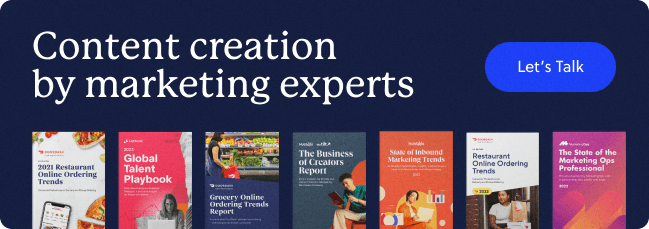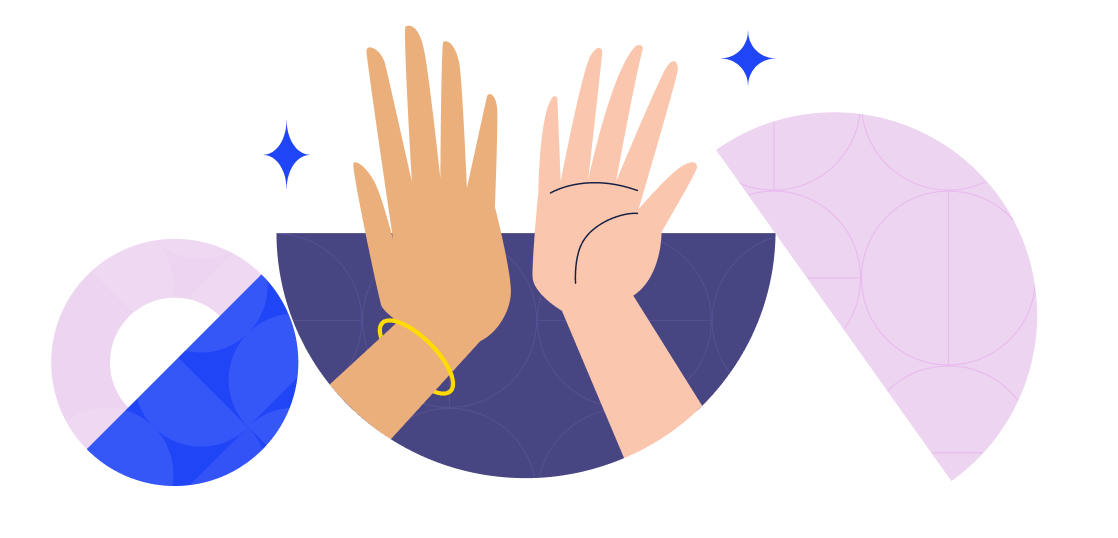Creating a marketing strategy takes time, effort, and investment. If you invest in the wrong content or social media channel, or use the wrong tone and language, you’ll set yourself up for low engagement and low conversion. So, what’s the answer? Start by developing an understanding of your audience, learn what they want, then get to work on content marketing.
Let’s walk through what a buyer persona for marketing is, how to create one, and some examples for inspiration.
Looking for content marketing support for your brand? We can help. Let’s Talk
What are marketing personas?
Marketing personas, or buyer personas, or customer personas, are profiles of generalized ideal customers for your brand based on data and market research.
Marketing customer persona presentations should include:
- General demographics/background for each persona
- Goals and challenges
- Examples of people who fit the persona (tip: include a few LinkedIn profiles that match your personas)
- What this persona reads and consumes online (industry publications they read, influencers or accounts they follow, newsletters they subscribe to)
- How this persona communicates
- What tools or platforms this persona might use/prefer
- Messaging and elevator pitch
- Voice and tone

What are customer personas used for?
Customer personas are used to focus marketing, sales, and customer success efforts at the right audience and help solve the challenges that your ideal target audience faces. Rather than marketing to “women in their 20s” or “marketing managers”, customer personas provide details about the specific subgroups of individuals who are a good fit for your product or service. They help keep marketing and advertising spend down, lead to better ROI on marketing campaigns, and foster better customer relationships.
Examples of buyer personas for different markets
A lot of companies will put together buyer persona profiles and give them names, like “Store Manager Samara” or “Finance CEO Felipe”. Others use more general terms, like “Junior Fashion Buyer” or “Restaurant GM”.
Here are a few examples of how you might fill out a buyer persona profile for marketing.
Executive level/CEO buyer persona
- General demographics/background: 10-20 years of corporate experience, sales background, 40s – 60s
- Goals: Grow revenue, cut expenses, reduce turnover
- Challenges: Improving the customer experience, attracting new customers and talent
- Real-life example: Anjali Sud, CEO, Vimeo
- What they read/consume online: Forbes, Wall Street Journal, Alexis Ohanian
- Preferred communication style: Email, phone calls, presentations
- What tools or platforms they use: Email, sales and analytics software, Zoom, collaboration tools, LinkedIn
- Messaging and elevator pitch: This solution enables improved communication for team members and customers, saving businesses time and money and enabling a better experience overall.
- Voice and tone: Results-focused, innovative, professional, expert
Mid-level manager buyer persona
- General demographics/background: 5-10 years of corporate experience, marketing and people management background, 20s – 40s
- Goals: Increase engagement, drive qualified leads, convert prospects
- Challenges: Reaching new audiences, creating quality content, managing junior team members, time management
- Real-life example: Allison Van Duyne, Senior Marketing Manager, DoorDash
- What they read/consume online: TechCrunch, New York Times, The Atlantic
- Preferred communication style: Email, Slack, Zoom, Loom
- What tools or platforms they use: Marketing software, Twitter, LinkedIn, Instagram, TikTok
- Messaging and elevator pitch: Reach new, engaged audiences with our easy-to-use content creation platform with built-in analytics and automation.
- Voice and tone: Relatable, data-driven, fun, creative
Junior or associate level buyer persona
- General demographics/background: Less than 5 years of corporate experience, customer service background, 20s – 30s
- Goals: Hit marketing goals, generate traffic and interest, learn about the market
- Challenges: Learning new platforms, networking, improving skills
- Real-life example: Claire Elkin, Associate Marketing Manager, HubSpot
- What they read/consume online: HubSpot blog, Later blog, Canva on TikTok
- Preferred communication style: Text, Slack, Zoom, in-person meeting
- What tools or platforms they use: Social media, marketing software, TikTok, Instagram, Snapchat
- Messaging and elevator pitch: Learn about marketing strategy while engaging with your audience — all through quick videos and games.
- Voice and tone: Bold, funky, helpful, conversational
How to create a customer persona for marketing
To build out your own buyer personas for marketing and better define your target market, follow these steps. Talking to prospects and potential customers is the best way to learn how to communicate with them, so first-person feedback should be the first place you look.
1. Talk to sales and customer support about ideal customers
Listen to Gong recordings from sales and support calls, and meet with sales and support team members from different points in the customer journey. What questions do the most qualified leads ask during prospect calls?
2. Look through data to find common themes
Does your company use forms on your website? If not, add some and include useful questions, like company size or biggest challenge. Then, cross-reference these responses with prospects who have become customers.
Are there similarities between your top customers?
- Company size
- Title/role of the primary point of contact
- Location
- Background
- Social media presence
- Preferred method of communication
- How they found you
- Which tools or features they use most
3. Analyze the social media audiences of your brand and your competitors
Who is engaging with your posts (outside of your core audience of your family and friends…)? What about your competitors? Use the insights tools on each social media platform, or a tool like Later (they have great analytics) to learn more about your audience.

Source: Later
4. Narrow down your key target personas
Typically, marketing teams identify 3-5 target personas to focus on, but depending on your products, services, or strategy, you may need more or less.
Consider how you will bucket your target audience into the most promising, strategic groups. Maybe you have a lot of followers who consume your content, but it’s unlikely that they’ll buy anytime soon. They might still be a persona, but lower on the priority list than their superior who has purchasing power.
Think through:
- Who is most likely to be the decision maker?
- Who will find your brand first?
- Who will read your content?
5. Map out your personas in detail
Here’s where you get to the good stuff. This will guide your marketing strategy and help you create strategic messaging that increases the chances you’ll engage who you want to engage.
For each persona, determine:
- Pain points/challenges
- Goals
- Preferred tools/communication channels
- General demographics (title, education, age, interests)
- What they read/where they live online
- Voice and tone
Sharing and updating your marketing personas
After putting all this work into developing personas, it’s time to share them with your team and any external contractors who will be working with your brand.
Here are a few tips for making sure that your marketing buyer personas are used correctly and effectively.
- Create a branded presentation using Canva or Figma and share a cloud link with anyone who will use your personas. This includes sales, marketing, advertising, email marketing, product, and outside agency and freelancer teams. Check out Canva’s free user persona presentation templates for a good place to start.
- Include a section on targeting and demographics (backed by data) for social media advertisements and ads.
- Evaluate how accurate your personas are once per quarter or twice per year. Talk to sales, leadership, and marketing to see how well they still align with your ideal customer persona (ICP), then make any necessary updates.

Source: Canva
Customer personas are an important first step in any marketing strategy, whether you’re working with a startup or an established enterprise brand.
Follow us on social media @cxdstudio for more content marketing strategy tips and guides.












